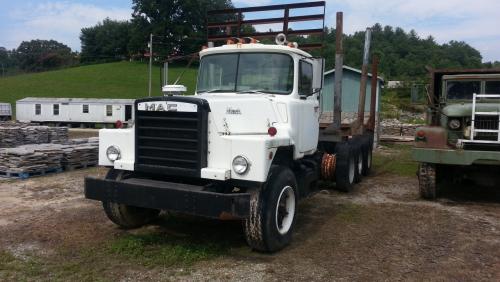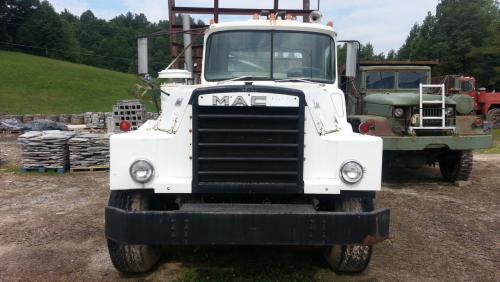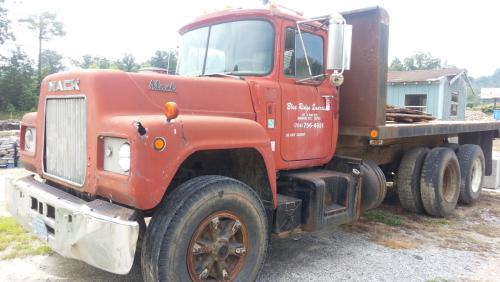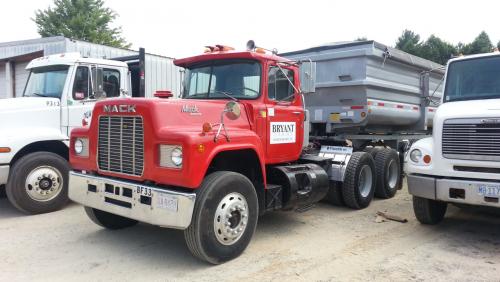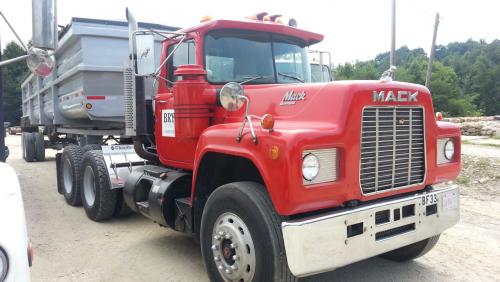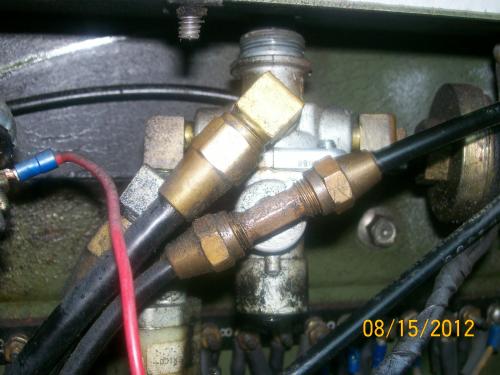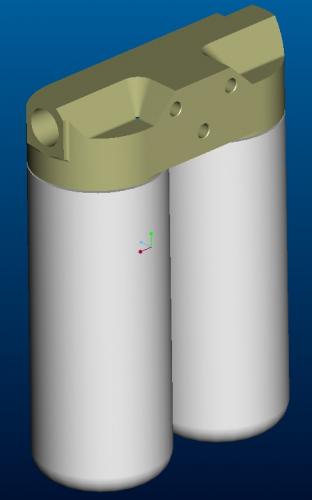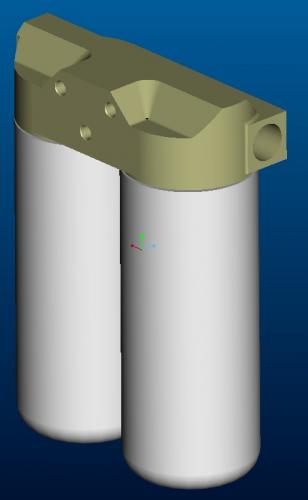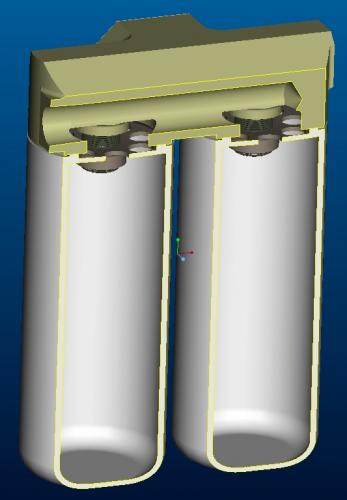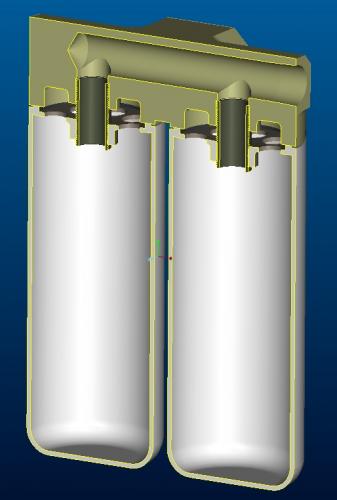-
Posts
2,618 -
Joined
-
Last visited
-
Days Won
37
Content Type
Profiles
Forums
Gallery
Events
Blogs
BMT Wiki
Collections
Store
Everything posted by doubleclutchinweasel
-
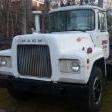
What to do with STUCK B model shutters
doubleclutchinweasel replied to j hancock's topic in Odds and Ends
What? Looks perfectly normal...doesn't it? Maybe that's an "export" truck? -
I thought you would only get air out of the blue (service) line if you applied service brakes (foot or trolley). When you push the parking brake release (yellow) down, and the trailer supply (red) down, you should get air to the red (emergency) line. May have to disconnect the lines to see if there is a problem with the tractor plumbing, or if there is air returning from the trailer somehow.
-
Oh. A 700! And with big 8. Awesome. Drove one years ago (only once or twice). It had the 2-stick 6-speed. Stout truck. Always thought a 700 cockpit looked kinda cool with the shifters going out the front of the floorboards! That air leak wouldn't be coming out of the tractor protection valve at the rear of the cab, would it?
-
Lots of slack adjusters available. Just need the spline spec & the length. There are some out there with multiple holes to give you some adjustability. Fairly easy to fix.
-
I'm still trying to figure out an extra gear on a 15-speed. Don't know where that would be. I'm like everyone else, familiar with "nothing" & "double-nothing" on a 13-speed. But my 15-speed doesn't have any unused gears...
-
Sure thing, 'Dog. That valve was the first piece I changed on mine when I got it home. It was leaking. Could turn it and make it better or worse. I got quite an education in Mack air brakes. Almost every piece of mine has been changed. Even upgraded from DD3 parking brakes to spring brakes. Look up my content. There are a couple of posts about the brake upgrade. And, there's one entitled "sometimes I wonder" that shows everything I had done up to that time. Let me know if I can help with the air brake circuitry.
-
Here is a picture of my parking brake valve, taken as I was changing it out. If you look closely, you can see part of the ID number stamped into the side. The most common "yellow button" valves were the PP1 and PP2. The PP2 has the anti-compounding feature, which keeps you from adding brake force to the parking brake if you press the pedal when the spring brakes are applied. It does this simply by porting some air to the "release" side of the parking brake at the same time the service brake is applied. Pretty simple, and pretty clever. I am also attaching a couple of .pdf files for these 2 common valves. Maybe you can find your number listed! PP-1.pdf PP-2.pdf
-

ENDT-673C LuberFiner Gasket
doubleclutchinweasel replied to doubleclutchinweasel's topic in Engine and Transmission
Looked into changing the system over to the spin-on filters of the 675. Not just the filter circuit. The oil cooler, the water pump housing, the radiator hose, thermostat housing, and other assorted small parts are all different. So, I changed oil and filter with the original setup this morning. Used a Carquest 85233 filter. Had 2 gaskets from Carquest. One was a 90114, which is just an O-ring. The other, a 90414, is best described as a slightly "elongated" O-ring. Either would probably work. I used the 90414, and positioned it in the housing so the outer rounded portion fit down into the groove in the housing, and the inner rounded portion was "up". This made the gasket look like it was "crowned" upward toward the inside, which matched up nicely with the shape on the bottom of the cap. Hard to explain! Filled the crankcase (5 gallons). Filled the filter (3 gallons). Started it up, cracked the filter vent, listened to the air escape. When oil started coming out, tightened it down. Used 2 new copper washers on the plugs (7/8" ID on the oil pan & 1" ID on the filter vent plug). Cleaned a LOT of sludge out of the filter canister. Nasty! We'll see...- 44 replies
-
- luberfiner
- oil filter
-
(and 1 more)
Tagged with:
-
There are a few different valves. If you look at the valve, there usually is a tag on it with a number. That number is a big help! My parking brake valve incorporated an anti-compounding valve. Very handy. You can download the Bendix handbook, which has lots of good stuff in it. I redid virtually my whole system. So, let me know if I can help.
-

COMPRESSORS
doubleclutchinweasel replied to rustydog's topic in Antique and Classic Mack Trucks General Discussion
I have Bendix info somewhere that tells which are interchangeable. 2 different drive attachment methods, I think. Not sure which is the oddball. 550? Actually, after looking, I think I was thinking about the 500 vs 501 difference...which, as mentioned already, was related to the power steering connection. So, never mind! -

ENDT-673C LuberFiner Gasket
doubleclutchinweasel replied to doubleclutchinweasel's topic in Engine and Transmission
Like I said, it shouldn't be that complicated to do a "remote" filter setup. Here is my concept of a dual-filter, full-flow system. The flow rates and other specifications of these filters match the standard filters for a 237. But, they have a built-in relief valve to allow oil to bypass when the filters are maxed-out, instead of having the relief valve in the block. This can be mounted anywhere it is convenient, and connected via hoses. The ports in each end are 1" pipe threads, just like the fittings that screw into my canister. Two of these pictures are just external views. The other two are cutaways showing the supply and delivery porting. If you really wanted to get cute, a relief piston could be integrated into the block, allowing the bypass oil to go to a separate bypass filter. I guess I'm really surprised I can't find something equivalent to this online. Seems pretty "universal" to me...- 44 replies
-
- luberfiner
- oil filter
-
(and 1 more)
Tagged with:
-
TRQ-7220 Quadruplex Shift Sequence Based on the gearbox ratios I got off another Wiki article, here are all the effective ratios for a TRQ-7220 Quadruplex. You can see where the ratios overlap, and would be skipped. You can also see why some of the LO-LO ratios would not be useful in a progressive sequence. Those could have been used, however, for "road speed control" for specific applications. I have done this with lots of the other old transmissions as well, if anybody is interested. Author doubleclutchinweasel Category Antique & Classic Mack Info Submitted 08/13/2014 11:59 AM
-
- 1
-

-

TRQ-7220 Quadruplex Shift Sequence
doubleclutchinweasel posted a tutorial in Antique & Classic Mack Info
Based on the gearbox ratios I got off another Wiki article, here are all the effective ratios for a TRQ-7220 Quadruplex. You can see where the ratios overlap, and would be skipped. You can also see why some of the LO-LO ratios would not be useful in a progressive sequence. Those could have been used, however, for "road speed control" for specific applications. I have done this with lots of the other old transmissions as well, if anybody is interested. Mack Transmissions.xls -

ENDT673C Oil Circulation Diagram
doubleclutchinweasel replied to j hancock's topic in BMT Wiki Support Topics
Mine was a '72 printing... -

ENDT673C Oil Circulation Diagram
doubleclutchinweasel replied to j hancock's topic in BMT Wiki Support Topics
That's funny! I was just looking at those same pics in my book last night! Was just about to comment on the direction of oil flow. Great minds, huh? I found a note in my manual which indicated that, at one time, the oil flowed through the filter first, then through the cooler. But, as shown in your pictures, the "current production", as they called it, went through the cooler first, and then through the filter. So, the images I posted are correct for my particular model. And, agin, the filter is holding oil today. So, the check valves work...sometimes. You know, I remember my dad pulling the can out of an old R when I was just a young'un, and that can was not full, either. And, I know he had not drained it. I guess check valve issues were common on those cans...even back then. -

shifting a 5 and 4
doubleclutchinweasel commented on moglins1's tutorial in Antique Tutorials and How-To Articles
I grew up on a 5 + 4 Mack Quadruplex. Freightrain is correct about one thing; save the "split-shifting" with 2 hands till you get used to it! But, you don't necessarily shift the MAIN first. UPSHIFT whichever box you need to shift first, then DOWNSHIFT the other. If you try to downshift the main first, for example, you probably won't have enough RPM to do so. And, if you can, there's really no need to split-shift. I can give you a couple of different patterns to use. There is also a slight difference between an 18-speed and a 20-speed. Since the Hi-Split and 5th geear are both overdrive in the 18, there are a couple of gear combinations which are duplicates, and should be skipped. On the 20, there are no duplicates. First of all, the LO-LO on the compound is rarely used. In fact, the only time I ever used it, other than for backing, was to get moving in a steep place, and then only with one or two gears. First Sequence (18-speed box) (this will work for most conditions, and has no split shifting): LO-SPLIT 1st LO-SPLIT 2nd LO-SPLIT 3rd LO-SPLIT 4th DIRECT 4th (this is your 1:1 gear) HI-SPLIT 4th (overdrive) HI-SPLIT 5th (double overdrive) Second Sequence (18-speed box) (for heavy loads): LO-SPLIT 1st DIRECT 1st HI-SPLIT 1st LO-SPLIT 2nd DIRECT 2nd HI-SPLIT 2nd LO-SPLIT 3rd DIRECT 3rd HI-SPLIT 3rd LO-SPLIT 4th DIRECT 4th HI-SPLIT 4th HI-SPLIT 5th If you need more on the bottom end, start out in LO-LO 1st, go to LO-LO 2nd, then to LO-SPLIT 1st. On the 20-speed, just split 5th the same as 1st-4th. The heavy-duty models had the 4-speed compound on the left, and the 5-speed main on the right. Some of the lighter ones had tat reversed. -
Cab Mount (Upper) - 20QL250 (4 pcs) (alternate - BWP-NSI MA9R, PAI FMT-4900) Cab Mount (Lower) - 20QL1144 (4 pcs) (alternate - BWP-NSI MA9O, PAI FMT-4740) Radiator Mounts - 20QL231P9 (2 pcs) (alternate - BWP-NSI MA9AE, PAI FMT-4750 (possible slight difference in length))
-
R-Model Cab Mounts Cab Mount (Upper) - 20QL250 (4 pcs) (alternate - BWP-NSI MA9R, PAI FMT-4900) Cab Mount (Lower) - 20QL1144 (4 pcs) (alternate - BWP-NSI MA9O, PAI FMT-4740) Radiator Mounts - 20QL231P9 (2 pcs) (alternate - BWP-NSI MA9AE, PAI FMT-4750 (possible slight difference in length)) Author doubleclutchinweasel Category Antique & Classic Mack Info Submitted 08/13/2014 08:40 AM
-

ENDT-673C LuberFiner Gasket
doubleclutchinweasel replied to doubleclutchinweasel's topic in Engine and Transmission
And now the stupid thing is holding its oil level just fine...- 44 replies
-
- luberfiner
- oil filter
-
(and 1 more)
Tagged with:
-

ENDT-673C LuberFiner Gasket
doubleclutchinweasel replied to doubleclutchinweasel's topic in Engine and Transmission
Most car engines bypass the filter in the engine block, at the filter mounting point. Virtually every filter system has a bypass. It can even be in the filter, I suppose. Without it, ALL the oil has to go through the filter...clean or dirty. And that's all but impossible. It would take a LOT of filters to flow all the oil the pump moves. Yours probably has a bypass feature in either the housing or the filters themselves. Hard to imagine letting a clogged filter starve the engine for oil. But, I could be wrong (again)! Most systems, like the car engine, allow the unfiltered bypass oil to go right past the filter & into the engine! The PAI pictures, I believe, show a bypass piston in the filter head. This oil could go to either the engine or the pan. Can't really tell. On my monstrosity, the bypassed oil goes through the bypass part of the filter & back to the pan. A great setup...when it's working!- 44 replies
-
- luberfiner
- oil filter
-
(and 1 more)
Tagged with:
-

ENDT-673C LuberFiner Gasket
doubleclutchinweasel replied to doubleclutchinweasel's topic in Engine and Transmission
Wonder if I could come off the supply hose with a "Y", and go through 2 Fleetguard (for example) heads, and "Y" back together into the delivery hose???- 44 replies
-
- luberfiner
- oil filter
-
(and 1 more)
Tagged with:
BigMackTrucks.com
BigMackTrucks.com is a support forum for antique, classic and modern Mack Trucks! The forum is owned and maintained by Watt's Truck Center, Inc. an independent, full service Mack dealer. The forums are not affiliated with Mack Trucks, Inc.
Our Vendors and Advertisers
Thank you for your support!



